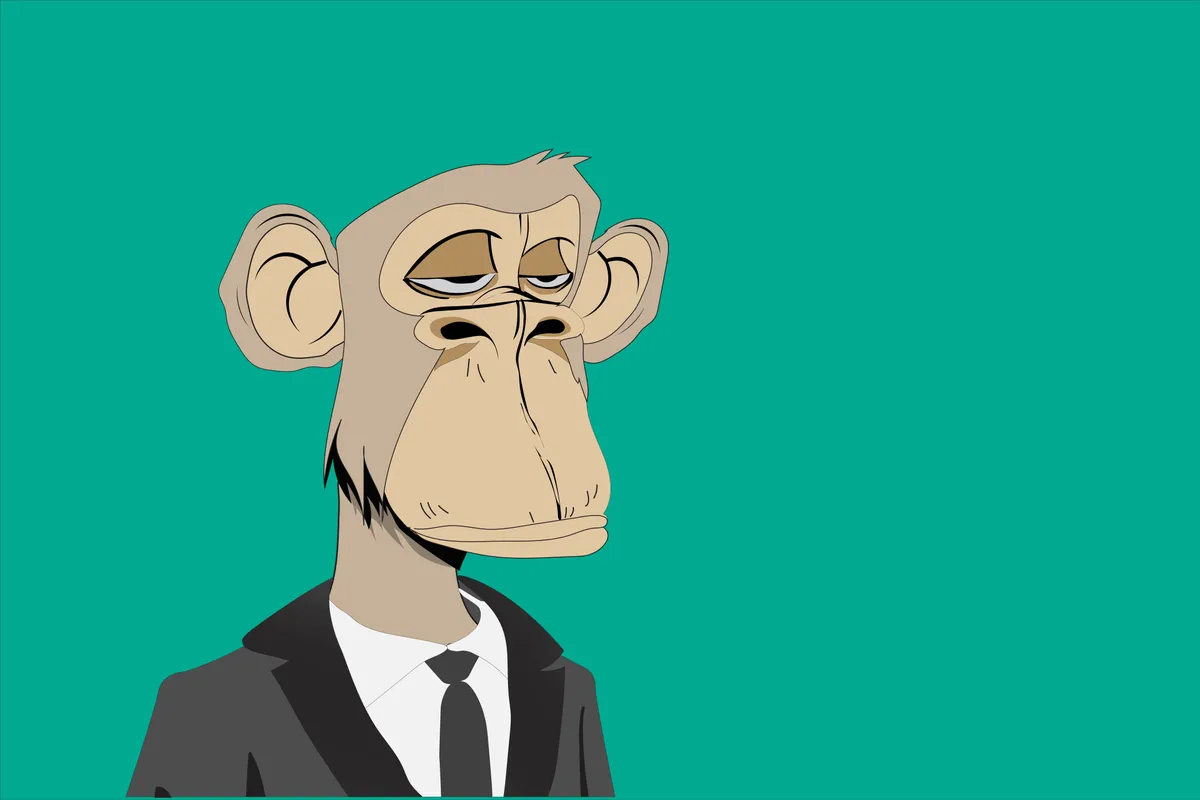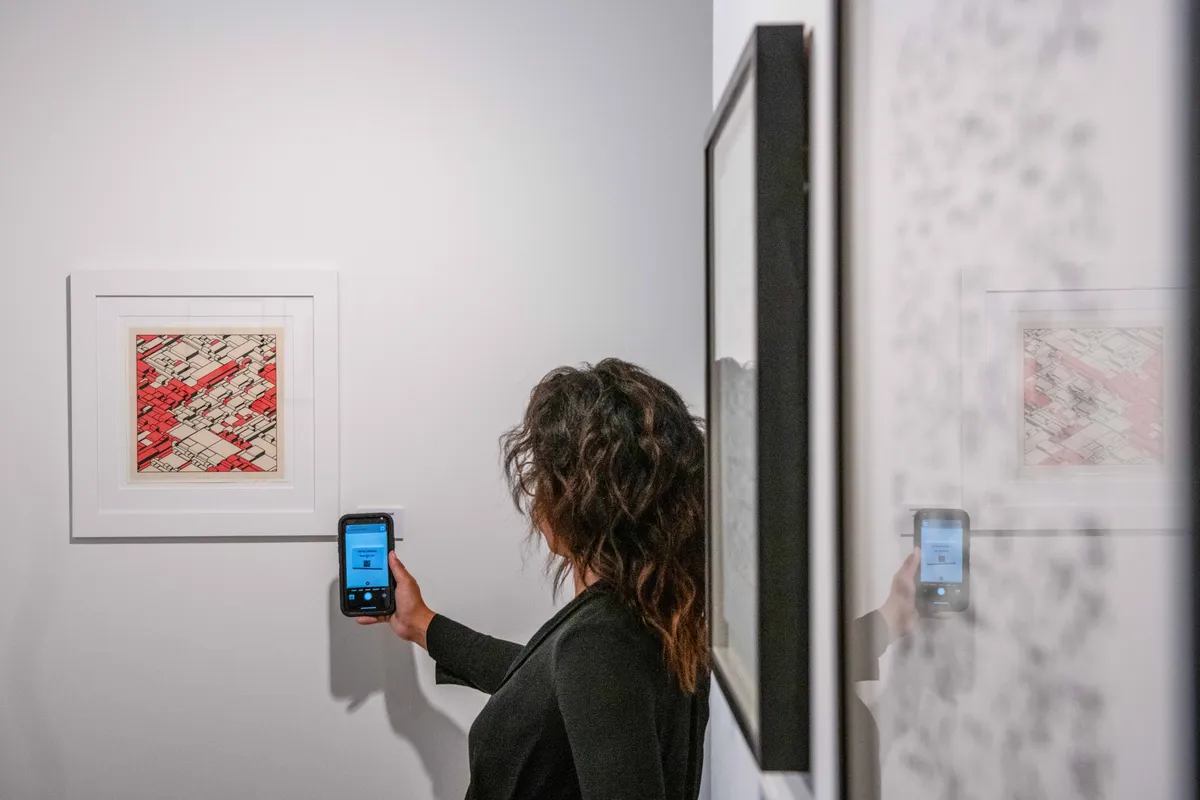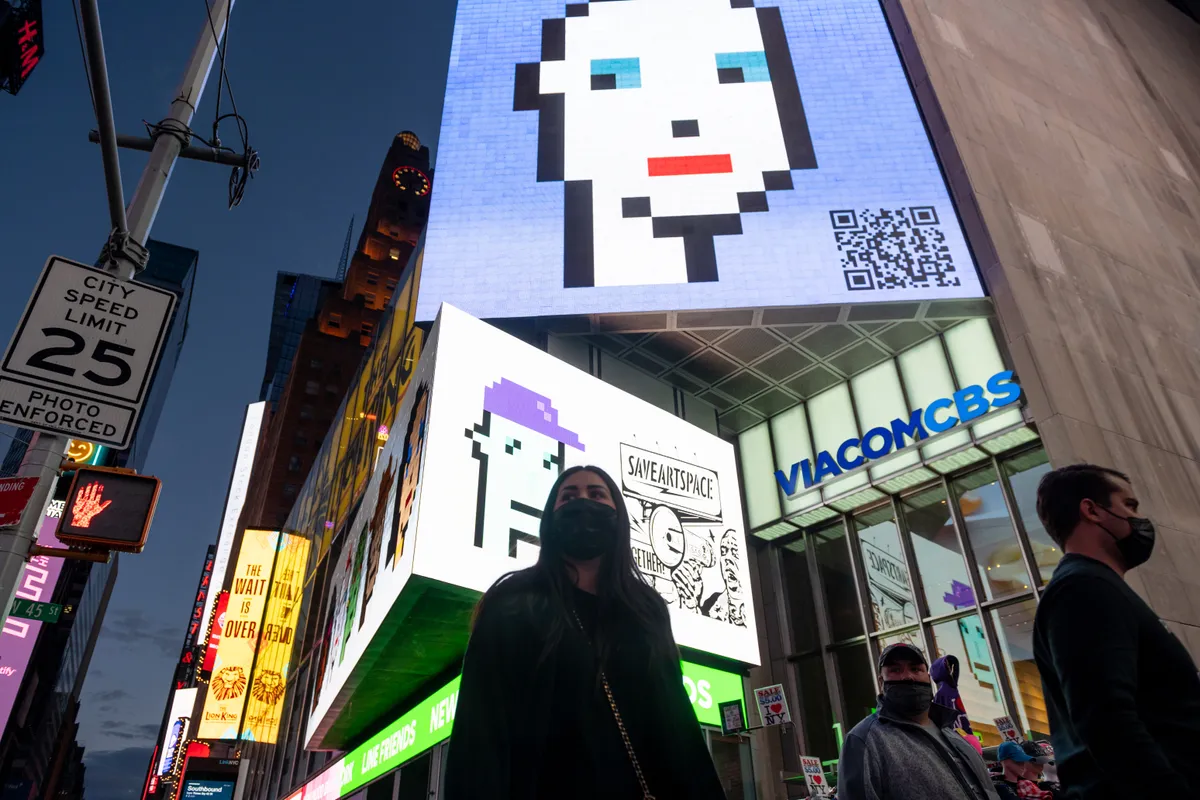NFTs are all the internet seems to be talking about right now, with celebs buying into the craze, others making millions from them and the rest of us arguing wether they're just one big con.
In reality, NFTs have been around for years, only blowing up recently in the realm of digital art. But what exactly is an NFT? Should you actually buy one? And are they here for good?
What are NFTs?
NFT stands for ‘non-fungible token’. That breaks into two parts - 'non-fungible' and 'token'. Something that is fungible is interchangeable so "non-fungible is everything that is unique. A painting like the Mona Lisa that you see in the museum, or in the digital world, a video you create, a tweet or a piece of digital artwork," says Dr Merav Ozair, a blockchain expert and fintech professor at Rutgers Business School.
The token section refers to its digital existence and the fact that it is protected using blockchain technology. To break it down even further, an NFT is simply a digital asset that, because of its existence on a blockchain (we'll come to that later), can’t be replicated.
While the most common example of NFTs today is digital artwork, it could be a whole host of things. GIFs, songs, videos, tweets, digital skins for games or even headshots of William Shatner (yes, that is an NFT you could buy.)
You are recorded as the owner of that product in the blockchain, in the same way that you could be the owner of a physical painting, one-of-a-kind vinyl or a poem that only you have a copy of.
How do NFTs work?
Okay, here’s where things get slightly more complicated. An NFT relies on two pieces of technology – a blockchain and cryptocurrencies.
Blockchains are a term you’ve likely heard before as they quickly became a popular concept in the digital age. A blockchain is a distributed digital ledger, or in other words a shared electronic database.
It's similar to a Google Drive or Dropbox with the exception that, while you can add to it, you can't remove or edit anything. There isn't just one singular blockchain. There are loads of them and they all work slightly differently.
To buy NFTS, you need a cryptocurrency. This is usually one called Ether which uses the Ethereum blockchain. However, there are other digital currencies on different blockchains that can be used, depending on where you purchase your NFT.
By spending your Ether on an NFT, your purchase is added to the blockchain. Because no one else can change this, there is a clear piece of proof that you own the NFT in what is known as a 'smart contract' - a piece of data that shows ownership, how it's been transferred, licence fees and other key pieces of information.
Where can I buy NFTs?
So you’ve got some Ether (or another cryptocurrency for NFTs), where do you go to make a purchase? Unfortunately the world of NFTs and crypto exchanges is a bit like the Wild West: there are only a handful of legitimate places you can go to make a purchase without being ripped off.
The best-known platform is called OpenSea. This is where most of the NFTs you will have seen in the news have been uploaded and bought. It is also one of the exchanges with the most backing and regulation.
It is well worth noting that, as with physical art, a NFT is only worth as much as its perceived value, which can change dramatically. So if you buy an NFT artwork today for £1000 it may not be worth that tomorrow.

Does an NFT grant copyright ownership?
When you purchase an NFT, you might not be buying the complete ownership of that product. Yes, you do become the owner in the sense that it is now your property, and the ownership is traceable on the blockchain, but that isn’t always accompanied by the laws of copyright.
This means you might not have permission to reproduce it - putting it on a T-shirt for example.
"The exact laws for each NFT depend on the smart contract used but it can be questionable. If you buy a painting, do you own the rights? Can you claim that you are the painter? Probably not. Do you own it? Yes. So it's the same idea with the NFT," says Ozair.
However, that doesn't mean you can't then make a profit from your NFT, even if you didn't create it or own the full copyright. "If I own it, then I can sell it. Again, like a painting, once you've bought it you can then sell it on as it is yours to sell."
Are NFTs a scam?
While the core concept of an NFT isn’t a scam and the large majority are very much legit, that doesn’t mean that they are all safe.
The technology behind NFTs is new and somewhat complicated and there are people looking to capitalise on this confusion.
"If you don't understand the technology behind it and what it can offer, it's easy to get the wrong impression. It's easy to think it's all scams and fraud but that's the same thing people said about the internet at the start," says Ozair.
"People say it's a fad, it's a gimmick, and of course, many of them are scams - we know that and I wouldn't be surprised if a lot of NFTs did turn out to be scams. But people shouldn't get the wrong impression. The value of this technology is there, it's just important to understand it."
If you plan on purchasing an NFT, a lot of research should be done first. Check the marketplace you’re purchasing from, the collection it is part of and the rights you have with that NFT. It is also important to keep in mind that the value of NFTs is speculative. What you consider a good price for something might not be the same for others, and value can drop.
What can an NFT be used for and what is the future?
Right now, most of the examples we see in the news are art NFTs. These can be pictures, illustrations, GIFs or other pieces of art people have created, but that isn’t the only form an NFT could take.
"The power of NFTs is the authentication. If you think about it, everything in our economy is transaction-based, even an email, a payment or sending money, these are all transactions and for them to be official, they need to be authenticated," says Ozair.
"In the traditional world, we use all kind of intermediaries to make this work, whether you're an artist trying to get authentication that your work is the original, or a bank making a payment, a marriage licence - all of these situations need a third party to declare their authenticity."
While NFTs are mostly used for art and memorabilia right now, Ozair sees a future where they are mostly used for the authentication of a transaction, saving money, time and confusion.

Are NFTs bad for the environment?
Unfortunately, the large majority of NFTS are weight down by a pretty large footprint.
“Ethereum uses more energy than the Netherlands. Over 100TWh per year. The blockchain has a carbon footprint larger than Singapore’s, around 50-60 million tonnes of CO2 per year, nearly twice as polluting as Europe’s biggest coal-fired power plant (Belcatow, Poland),” Says Dr Pete Howsen, a senior lecturer from Northumbria University Newcastle.
“We know how much energy each individual NFT is responsible for, because we know how many transactions are taking place on the Ethereum blockchain. It’s 115.07 kg CO2 per transaction. If you watched 20,000 hours of YouTube, you would generate less CO2 than if you bought or sold an NFT once. That single transaction would require the same amount of energy as your average UK household uses in two weeks.”
However, this isn't to mean that NFTs can't become more environmentally-friendly. "There is a move to maybe utilise green energy like solar or wind. Secondly, there is a move now from proof of work to proof of stake that has been in the works for a while now. These two factors, along with less energy-intensive currencies, could reduce environmental impact," says Ozair.
Proof of work and stake are the two ways a blockchain transaction can be verified. Proof of work is an older and more energy intensive version. Proof of state is newer, less energy-intensive and the option most cryptocurrencies are moving to.

What are some well-known examples of NFTs?
There have been plenty of famous cases now, most of which made the news thanks to the millions they were sold for.
Mass Banner
Even by the standards of the complicated world of NFT, Mass Banner is a unique proposal. It is a single NFT that has been split into 266,445 shares. Those shares were bought by around 30,000 buyers which means no single individual owns the project. However, at a total value of $91.8 million, this would be the most expensive NFT to date if the tens of thousands of buyers came together with all of their shares.
The First 5000 days
One of the most famous NFT art pieces by one of the best known names in the field, The First 5,000 Days is a piece by a digital artist known as Beeple. It sold for $69 million in 2021 which at the time made him among the three most valuable living artists.
For years, Beeple was creating a digital image every day. This project compiled the first 5000 days of his project into a single image which he sold as an NFT.
Bored Ape Yacht Club
Eminem, Jimmy Fallon and Paris Hilton - all owners of a Bored Ape Yacht Club NFT. A collection of 10,000 images, these NFTs consist of different apes, each with their own clothes and styles to keep them unique. To get one, you'll need to pay at least a few hundred thousand with the price only continuing to grow.
Axie Infinity
Axie Infinity is a game that has absolutely blown up since its creation. It brings in aspects of cryptocurrencies as well as NFTs and is one of the more unique examples of this technology.
In the game, you can buy 'Axies' which are little creatures that you use to battle, build and hunt. Each Axie is an NFT and these have sold for up to $800,000. Players can earn money by playing the game with some even making a full time career from it.
About our expert, Dr Merav Ozair
Merav is a blockchain expert and fintech professor at Rutgers Business School. She is a global leading expert on blockchains, cryptocurrency and NFTs.
Read more about future technology:

